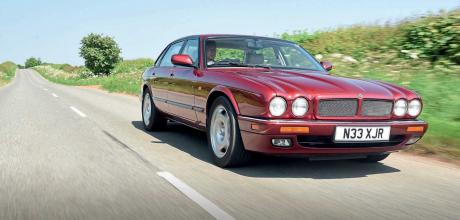1997 Jaguar XJR Manual X300
We encounter a fascinating XJR which represents what the original designers could have if given a free reign.
WORDS PAUL WAGER
PHOTOGRAPHY PAUL WALTON
Harder charging — UPRATED XJR
An Jaguar XJR uprated with the benefit of inside knowledge by an owner who helped develop it in the first place.
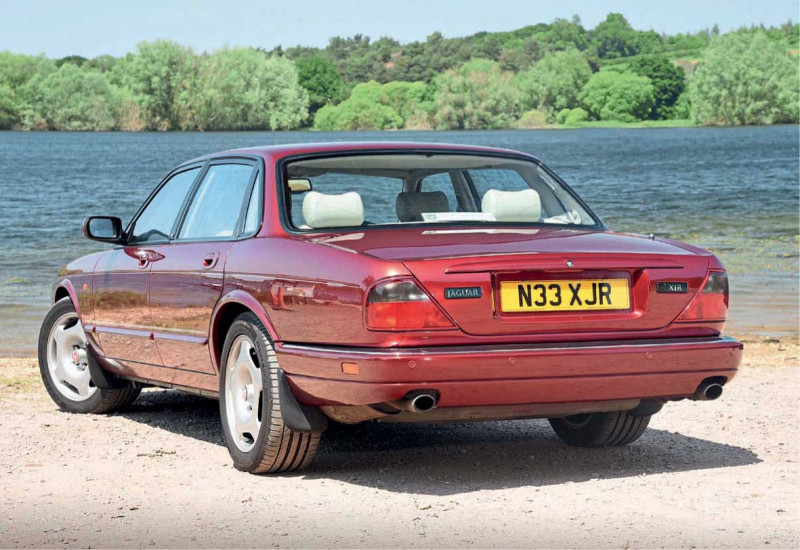
I found an old car magazine in the loft recently and as so often happens, I lost a good half an hour immersed in its contents… something which was all the more surprising, since it was my own picture on the editor’s page and at some point I would have read all of it at least twice.
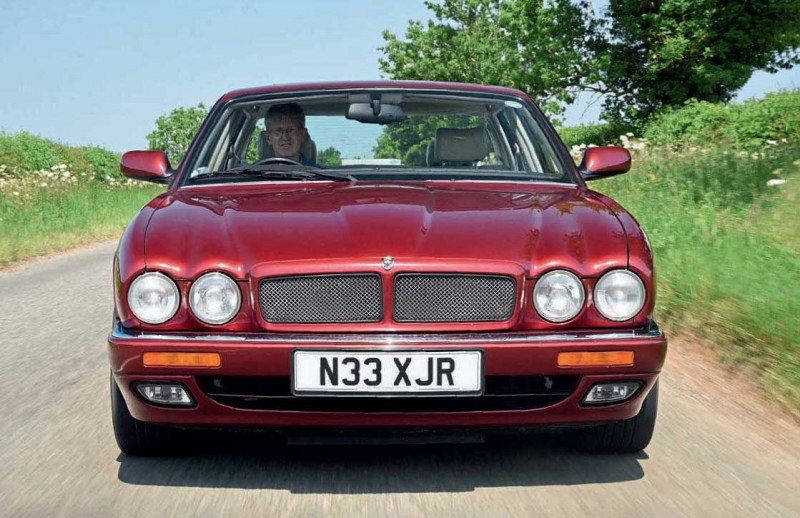
He’d covered more miles in the X300 than many long-term owners
It’s for that reason that I don’t normally read through every new issue of JW and I fell to wondering if the same is true of engineers working in new model development for major car makers. In many cases, they’ll spend years of their lives working on a car, yet when it reaches production they move on to the next one without a backwards glance.
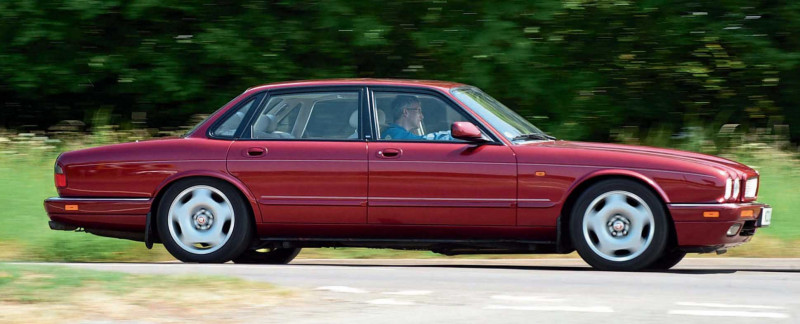
Or do they? As we discovered when we met Andy Stodart, owner of the XJR you see here, some projects leave a lasting impression long after they’ve ceased to become a part of the daily grind.
It took a while though: starting as a student engineer at Jaguar, he was some way off the bottom of the ladder for company cars and so didn’t acquire his own XJR until 2003.
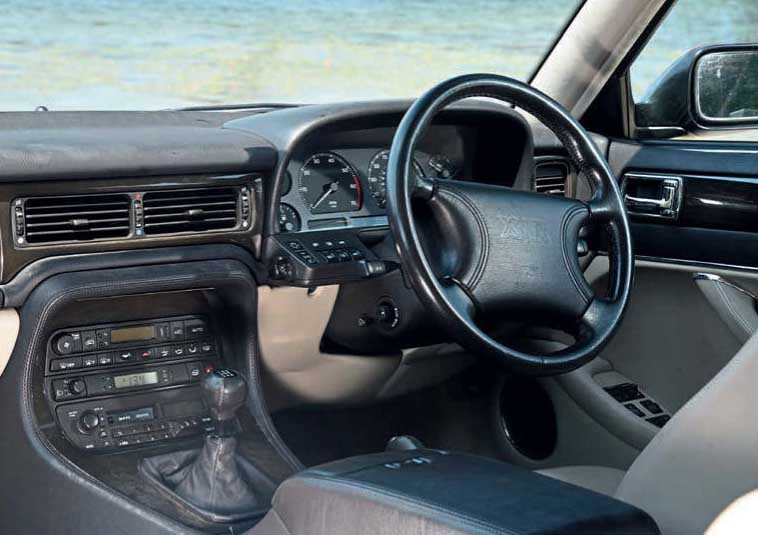
By then though, he’d covered more miles in the X300 than many long-term owners had driven in these cars, beginning with the early prototypes which were essentially XJ40s fitted with the AJ16 engine and progressing to extreme climate testing in Canada and Arizona.
Despite its significant place in Jaguar history, the Browns Lane top brass had been initially hesitant to sanction development of a supercharged XJ and Andy joined the XJR project shortly after it was given the green light for production – the expectation being that it would sell only 200 or so units as a niche product instead of the 6547 it eventually clocked up.
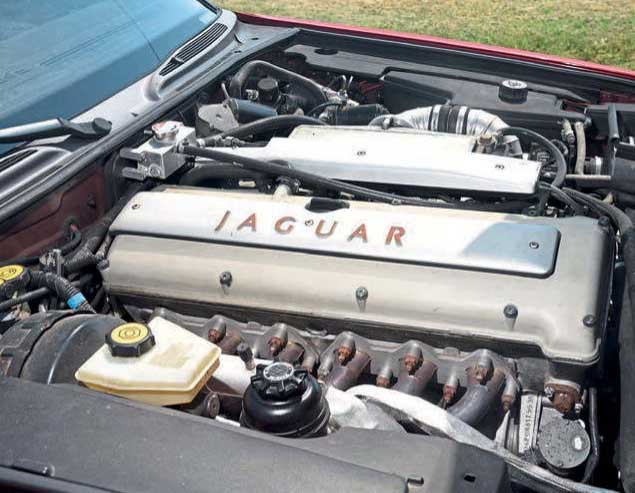
Andy’s speciality at the time was engine control electronics and he came to the XJR project fresh from developing a knock control system for the V12 engine plus a similar system for the ill-fated XJ41 ‘F-Type’ which was essentially that used for the supercharged AJ16.
In-gear acceleration compared to Autocar road test figures for a standard-manual XJR
The engine management electronics controlling the fuel injection and ignition were supplied by Lucas and it was the job of Andy and his colleagues as calibration engineers to refine the control ‘map’ within the ECU governing fuelling and ignition for production. These days there are countless remapping specialists who can promise to transform your car in just half an hour with a laptop and – if you’re lucky – a rolling road or even some on-road testing. In the world of production cars though, the process is more involved and begins with a bare engine in a dyno cell where the basic fuelling and ignition parameters are established before the process moves on to use running prototypes where performance under all conditions of load, speed and temperature can be examined.
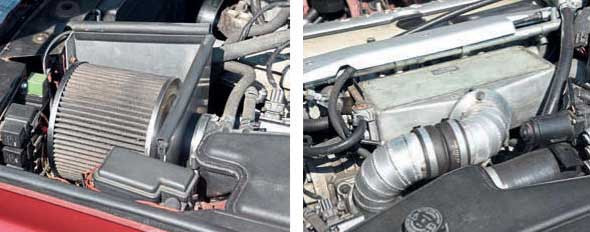
With the need to meet the often conflicting requirements of headline performance for the marketing people, plus emissions regulations, driveability, economy and durability targets, it’s no surprise to find that the calibration process is often a lengthy one, with Andy involved in the supercharged AJ16 project for several years before moving on to work on the S-Type and later enjoying a successful career in powertrain development elsewhere in the industry.
The XJR clearly remained a favourite though and when he acquired this one, he had a very definite plan in mind. The first element was the supercharger itself, which for production was the Eaton M90 – at the time the largest unit the American company provided, named after its displacement of 90 cubic inches per single pulley revolution. As Andy explains, while the X300 XJR was still in development, Eaton produced a larger M112 unit which would be fitted by Jaguar to the supercharged V8s.
By the time the larger Eaton unit was released for production, the X300 was too far into development to accommodate it, but Andy was curious to know how the AJ16 engine would have been with the larger blower. As he says, the power output of the production XJR was still well within the engine’s limits, so he acquired a suitable M112 from a Jaguar V8 and set to. I’d assumed the upgrade from M90 to M112 would be a simple bolt-on job but as I discovered, that’s a slightly foolish assumption since the increased displacement was achieved via a physically larger casing.
This meant that the entire induction pipework – “everything upstream of the head” as Andy puts it – had to be removed and modified to accommodate the larger supercharger, with a machined adapter for the throttle body. Naturally, with the car in bits for the best part of a year, it seemed only sensible to whip the head off to be ported and generally uprated too.
The revised intake pipework is a neat piece of work and is complemented by a big cone filter which is housed in a proper assembly separating it from the underbonnet heat to ensure it only takes cold air. It’s here where aftermarket bolt-on kits so often fall down when ditching the factory air box means the filter draws in warm air from the engine bay.
The importance of a free-flowing filter is illustrated by Andy’s amusing anecdote from back in the day when development engines would pull strongly before suddenly stumbling and it was discovered that the standard filter was so restrictive that the suck of the supercharger was collapsing and flattening the rubber intake hoses which were suitably revised for production. The exhaust side of things also received some attention, using a fabricated manifold and a custom system which marries this to the standard Jaguar rear section, thus ensuring that a ‘3+3’ layout is retained throughout, ensuring improved efficiency over the standard Jaguar system which combines all six cylinders into a single pipe before splitting into two tailpipes.
Interestingly, the revised layout loses the front catalytic converter, but as Andy explains, this was fitted originally to meet the cold-start requirements for emissions certification, the idea being that siting it as close as possible to the engine produces a faster warm-up. In everyday use, the secondary catalysts under the car are easily able to achieve an MoT pass.
With the engine back together, the fuelling and ignition needed tweaking suitably to take advantage of the bigger supercharger and obviously Andy was already more familiar than most with the working of the Lucas ECU. Despite having the knowledge though, what he didn’t have was the luxury of a multi-million pound development centre, whichmeant that the revised mapping was a painstaking process of manually calculating figures to be entered via editing software, while an oxygen sensor probe in the tailpipe was used to observe the results while driving. On the ignition front however, something which was simply brilliant in its simplicity was the ‘Andy bracket’ which advances the ignition timing by five degrees and requires nothing more than a spanner to achieve – see our side panel for details.
It all adds up to a unique XJR which is intriguing for the fact that it represents the car which could so easily have made production and so naturally we were keen to sample the XJR on the road.
Unlike so many modified cars though, Andy’s XJR looks utterly standard both inside and out, although it’s clearly a very well preserved example. When he fires it up though, there’s something not quite standard about the soundtrack: not so much louder, it simply sounds different and it’s explained by that exhaust. It seems that splitting the six cylinders into two pipes instead of one produces a lower frequency sound, yet it’s nicely subtle.
As befits someone with an engineering background, Andy explains the results of his modifications not in terms of tyre-smoking 0-60mph times but in terms of in-gear acceleration and it’s clear that the XJR has a really noticeable edge over the standard car, both in terms of response and outright power. Autocar magazine timed the standard manual XJR at 3.5 seconds for the crucial 50-70mph third-gear pull, which is reduced to 2.7 seconds in this car, with the 60-80mph time reduced from 3.8 to 2.7 seconds.
In fifth, the gap opens further, with the standard car taking 7.7 seconds from 50-70mph, while Andy’s XJR needs just 5.8 seconds and the 90-110mph time of 10 seconds for the standard car reduced to 7.3 seconds.
It also seems more planted than even the well-composed standard XJR and this is down to some subtle chassis mods: rosejointed drop links and a rear anti-roll bar uprated from 16mm to 22mm, which those in the know will calculate as providing roll stiffness increased by a factor of 2.7.
It all adds up to a package which presents a fascinating glimpse into what might have been had the bigger Eaton blower been available at the time. As it was, the standard XJR really made BMWs it up and take notice, but this ‘turned up to 11’ example would leave the contemporary M5 for dead.
LEFT: Fabricated exhaust manifold was created using drawings provided by Andy and mates to a bespoke twin-pipe centre section to create a '3+3' system.
ABOVE RIGHT: Fitting the physically larger Eaton M112 supercharger required modification of the intake pipework.
RIGHT: Free-flow filter sits inside a cold air enclosure. Most XJR fans reckon the car is at its best in five-speed manual form. Andy's ECU reprogramming service assists those converting automatic cars.
AJ16 REMAPPING
Having done the hard work to remap his own XJR, Andy is now able to offer the service to fellow owners of supercharged AJ16 engines, whether they’re in their original home or another vehicle. As he explains, the standard ECU incorporates an immobiliser which uses a transponder in the ignition key and receiver in the column shrouding, which can be tricky to incorporate into resto mod applications, kit cars or similar but he can remove this feature. Another popular request is from owners converting their XJRs from automatic to manual. The nuts and bolts of this can be achieved very neatly using factory-standard parts, but the ECU in factory automatic cars was interfaced with the electronic control of the gearbox and without any signal from a gearbox ECU it will retard the ignition timing – something it was originally programmed to do when changing gear. This explains why some owners have been underwhelmed by manual converted cars which don’t go quite as well as expected and is caused by the ignition running permanently retarded. With the ECU programming suitably modified, the car is transformed – especially with the ‘Andy bracket’ fitted. The X300 is also known for suffering water ingress which can damage the ECU and Andy is able to help out with a replacement unit programmed to suit the car, since the ECUs from the 3.2 and 4.0 XJ6 can be suitably programmed for the XJR. Yes, there are many aftermarket standalone fuel injection and engine management systems on the market these days, but retaining the original ECU makes a lot of sense for many reasons – not least of which being that you retain the benefits of all the painstaking mapping work performed by Andy and his colleagues 30 years ago. Prices? You’re looking at £350 plus postage if you provide the ECU, or £450 if an ECU is required, while an ECU with the immobiliser function disabled is £600. More details from Andy at andystodart4@gmail.com.
ANDY’S BRACKET
Spend long enough in any of the XJR forums and you’ll probably see mention of something called an ‘Andy bracket’ and it’s no surprise to find that this is the Andy behind it. As he explains, he had developed a sophisticated anti-knock system for the supercharged AJ16 which could retard individual cylinders as required, before advancing the timing again to achieve an optimum advance without knock. Andy reports that the system would even allow the engine to run happily on 91 RON fuel, but a conservative policy at Jaguar at the time meant that the engine went to production with less aggressive timing – in simple terms, the maximum was set at the level which would have been appropriate without the knock control.
Rather usefully though, the ECU on the AJ16 engine takes its ignition timing reference from the crankshaft position sensor which is mounted on a bracket at the front of the engine. This means that the base ignition timing can be altered simply by moving the sensor the appropriate amount and Andy has developed a precision machined bracket to do just that. Taking just half an hour to fit, the repositioned sensor gives the engine five degrees of additional basic ignition advance and allows the knock sensor to do its thing to its full potential, all without needing to touch the ECU.
Those who have tried the £80 modification report that the extra timing sharpens up the responsiveness of both XJ and XJR, making it the ultimate bolt-on modification for these cars, as well as taking economy from 28mpg to 30mpg.
You’ll find Andy at andystodart4@gmail.com
TECH SPECS
- 5th 4th 3rd 2nd
- 20-40 8.1/9.2 5.0/5.7 3.0/3.6 1.9/2.3
- 30-50 6.9/8.4 4.3/5.2 2.9/3.4 1.7/2.4
- 40-60 6.2/7.9 3.9/4.9 2.7/3.4 1.9/2.7
- 50-70 5.8/7.7 3.9/4.7 2.7/3.5
- 60-80 6.2/7.7 3.9/4.9 2.7/3.8
- 70-90 5.8/7.9 3.9/5.4 3.2/4.4
- 80-100 6.5/8.6 3.9/5.8
- 90-110 7.3/10 5.0/6.7


